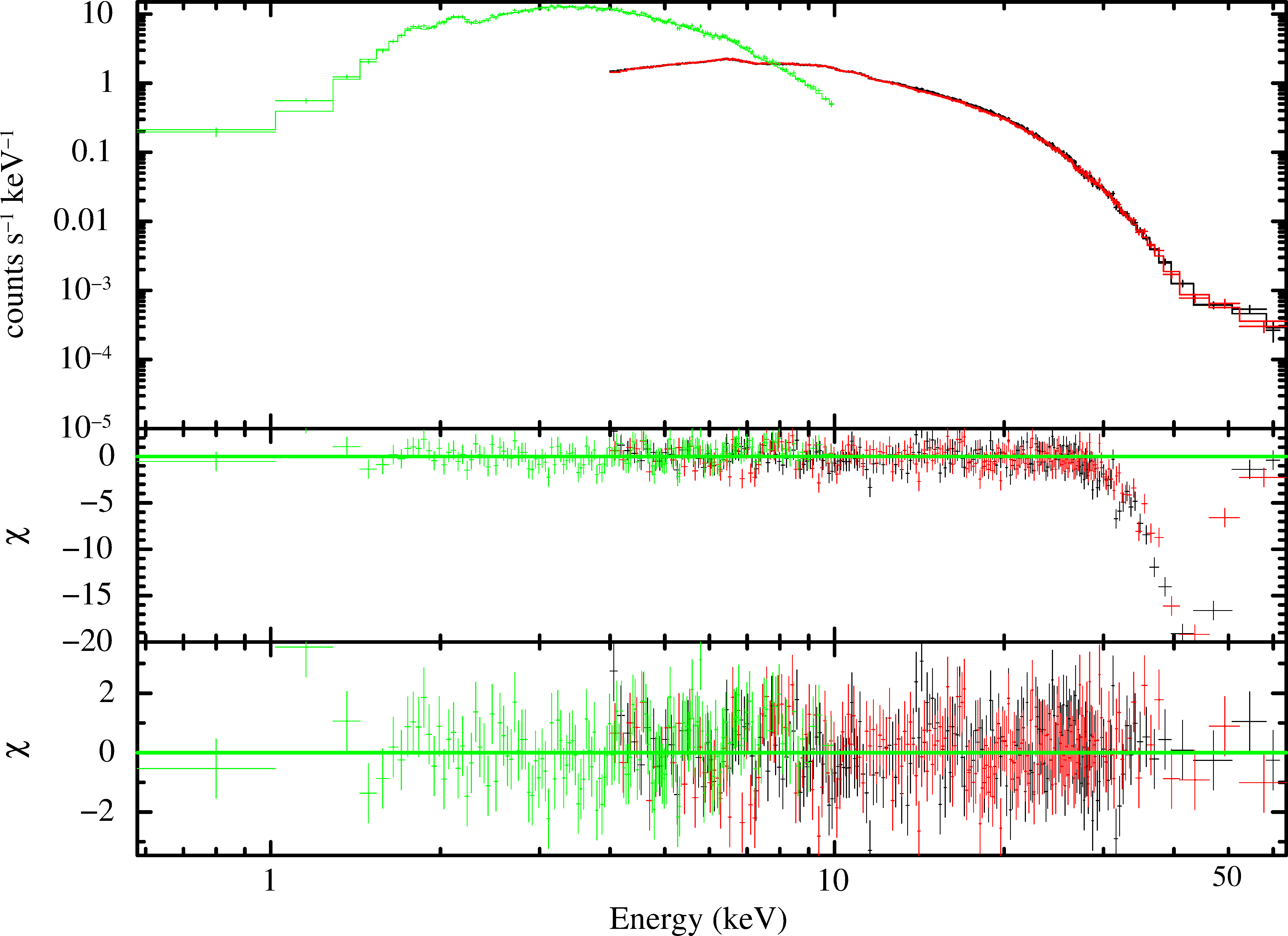NICER / ISS Science Nugget
for March 3, 2022
An Exceptionally Deep Cyclotron Resonance in the X-ray Binary GRO J1750-27
Accreting X-ray pulsars are binary systems in which a neutron star draws matter from a companion star, first into an accretion disk and eventually down to the neutron star's surface. The superheated gases glow in X-rays, resulting is bright, episodic outbursts that enable in-depth study of the accretion process and the environment around the neutron star. On September 22, 2021, the X-ray binary GRO J1750-27 went into a rare outburst, observed with NICER and NASA's Fermi gamma-ray and NuSTAR X-ray telescopes, enabling for the first time a broadband spectral study of this source in the 0.5-60 keV photon energy range.
The resulting data constrained the continuum spectrum and revealed a previously unknown absorption line consistent with a Cyclotron Resonant Scattering Feature (CRSF; see Figure). Such absorption results from X-ray photons emitted near the star's surface being selectively scattered or absorbed by electrons spiraling at discrete energy levels in the powerful magnetosphere, which screens our view of the surface. Thus, CRSF is the only known direct probe of magnetic field strength near a neutron star's surface. The cyclotron line's centroid in energy was found to be near 43 keV for GRO 1750-27, corresponding to a field strength of 3.6x10^12 Gauss, similar to that of other, comparable systems. (The Earth's magnetic field strength is less than 1 Gauss.) The depth of this spectral feature was, however, found to be exceptional, perhaps the result of contributions to the X-ray emission from different accreting hot-spots on the neutron star surface, a scenario that would sample different values of the magnetic field and affect the observed cyclotron line's shape and properties. Deep CRSFs are also known from a few other accreting X-ray pulsars (e.g., GX 301-2 and 1A 0535+262), but the cyclotron line in GRO J1750-27 is likely the deepest yet observed.
GRO J1750-27 is located far behind the center of our Milky Way galaxy, at a distance of about 18 kpc (59,000 light-years), which implies an outburst luminosity of about 9x10^37 erg/s Ñ near the expected maximal value for an accreting neutron star. Such high luminosities are rarely observed from these systems, so that GRO J1750-27 offers an opportunity to study accretion physics in a regime that typically cannot be probed in other sources. Preliminary results from these observations have been published this week by C. Malacaria et al. in Astronomer's Telegram #15241.

Figure: NICER (green) and NuSTAR (black and red) combined spectrum of GRO J1750-27. Top panel: data and best-fit model. Middle: residuals (data minus model) using the best-fit model but without the inclusion of a cyclotron line. Bottom: residuals from the best-fit model including a Gaussian absorption line near 43 keV to account for the cyclotron resonant scattering feature.
<< Previous
Main Index
Next >>